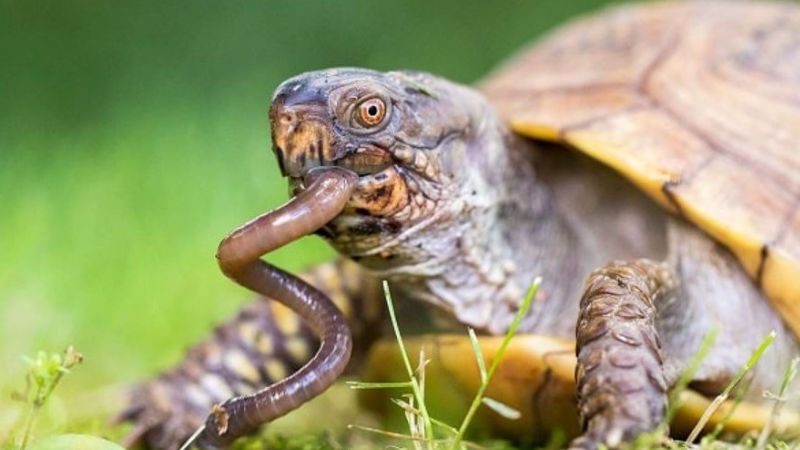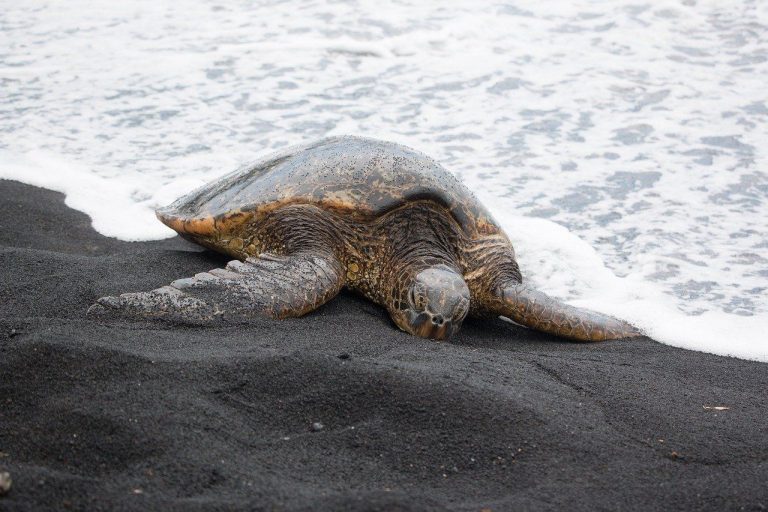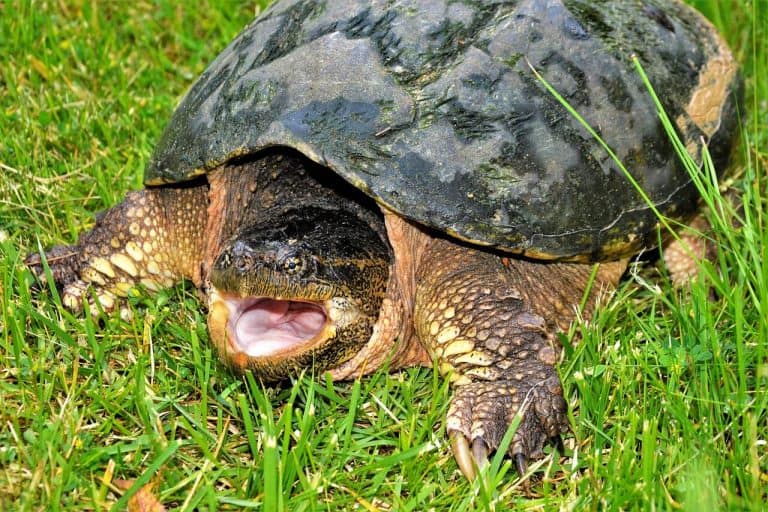The Ultimate Guide to Feeding Turtles in a Pond
Today we discuss Feeding Turtles in a Pond. Turtles are fascinating creatures that can bring life and charm to any pond. However, ensuring that they are well-fed is essential for their health and well-being.
In this comprehensive guide, we will explore the best practices for feeding turtles in a pond, including suitable foods, feeding frequency, and tips for maintaining a balanced diet. Whether you are a beginner turtle owner or looking to enhance your existing knowledge, this guide will provide you with all the information you need to keep your pond turtles happy and healthy.
Understanding the Dietary Needs of Pond Turtles:
Turtles are omnivores, which means they consume both plant and animal matter. In the wild, their diet consists of a variety of foods such as insects, crustaceans, fish, aquatic plants, and algae. When keeping turtles in a pond, it is essential to replicate their natural diet as closely as possible to ensure they receive the necessary nutrients for growth and vitality.
Key Points:
- Protein: Turtles require a high-protein diet, especially during their growing stages. Protein sources can include insects, worms, fish, and commercial turtle pellets.
- Vegetables: Leafy greens such as kale, lettuce, and spinach should be included in their diet to provide essential vitamins and minerals.
- Fruits: Occasional fruits like strawberries, bananas, and melons can be offered as treats but should not form the majority of their diet.
Best Foods for Pond Turtles:
Choosing the right foods for your pond turtles is crucial to their overall health and well-being. Here are some of the best foods you can offer to ensure a balanced diet for your aquatic friends:
1. Commercial Turtle Pellets:
- Description: Commercial turtle pellets are specially formulated to meet the dietary requirements of turtles. They typically contain a blend of protein, vitamins, and minerals.
- Feeding Tip: Look for high-quality pellets with minimal fillers and additives for optimal nutrition.
2. Insects and Worms:
- Description: Insects such as crickets, mealworms, and earthworms are excellent sources of protein for turtles.
- Feeding Tip: Offer live insects occasionally to stimulate natural hunting behaviors in turtles.
3. Leafy Greens:
- Description: Leafy greens like kale, collard greens, and dandelion greens are rich in vitamins A and K, essential for turtle health.
- Feeding Tip: Rotate between different greens to provide a variety of nutrients in their diet.
4. Fish:
- Description: Small fish such as minnows or feeder fish can be fed to turtles as a source of protein.
- Feeding Tip: Ensure the fish are appropriately sized to prevent choking hazards for the turtles.
5. Aquatic Plants:
- Description: Aquatic plants like duckweed, water lettuce, and water hyacinth can be added to the pond for turtles to graze on.
- Feeding Tip: Monitor the plant growth to ensure a sustainable food source for the turtles.
Feeding Frequency and Portions:
Establishing a feeding schedule and portion control is essential to prevent overfeeding or underfeeding your pond turtles. Here are some guidelines to help you determine the appropriate feeding frequency and portions for your aquatic companions:
Feeding Frequency:
- Juvenile Turtles: Feed daily to support growth and development.
- Adult Turtles: Feed every other day or 2-3 times a week to maintain weight and prevent obesity.
Portion Control:
- Pellets: Offer an amount that can be consumed in 5-10 minutes.
- Insects and Fish: Provide 2-3 insects or fish per feeding session.
- Vegetables: Offer a small handful of leafy greens per turtle.
Feeding Tip:
- Observe your turtles’ behavior after feeding to gauge if they are receiving adequate nutrition. Adjust the portions accordingly based on their activity levels and growth.
Supplementing Turtles’ Diet:
While offering a varied diet is essential for pond turtles, there are additional supplements you can provide to ensure they are receiving all the necessary nutrients:
1. Calcium:
- Importance: Calcium is vital for shell health and overall growth in turtles.
- Supplementation: Dust calcium powder on their food or provide cuttlebones for them to gnaw on.
2. Vitamin D3:
- Importance: Vitamin D3 aids in calcium absorption and prevents metabolic bone disease.
- Supplementation: Ensure your turtles have access to UVB lighting or offer vitamin D3 supplements as needed.
3. Multivitamins:
- Importance: Multivitamin supplements can help fill any nutritional gaps in their diet.
- Feeding Tip: Offer multivitamins sparingly according to the manufacturer’s instructions.
Behavioral Enrichment through Feeding:
Incorporating behavioral enrichment into your turtles’ feeding routine can stimulate their instincts and promote physical activity. Here are some ideas to enrich their feeding experience:
1. Foraging Activities:
- Hide food items around the pond or within floating objects for turtles to seek out.
- Encourage exploration and hunting behaviors by creating scavenger hunt setups.
2. Feeding Toys:
- Use floating platforms or feeding dishes to make mealtime more interactive.
- Place obstacles or toys in the pond to encourage movement while feeding.
3. Rotating Feeding Locations:
- Change the feeding spots periodically to prevent habituation and encourage movement.
- Create feeding stations at different depths within the pond to cater to turtles’ diving abilities.
Monitoring Turtles’ Health and Dietary Needs:
Regular monitoring of your pond turtles’ health is essential to ensure they are thriving in their environment. Here are some indicators to watch for regarding their health and dietary needs:
Signs of Overfeeding:
- Bloated appearance
- Excessive floating or sluggish behavior
- Accumulation of uneaten food in the pond
Signs of Underfeeding:
- Weight loss or decreased activity
- Shell abnormalities or soft spots
- Aggressive behavior towards tank mates
Consulting a Veterinarian:
- If you notice any concerning symptoms or changes in your turtles’ behavior, seek advice from a reptile veterinarian.
- Regular check-ups can help detect potential health issues early and provide appropriate treatment.
Seasonal Considerations for Feeding Pond Turtles:
Adjusting your turtles’ diet based on seasonal variations is crucial to accommodate changes in their metabolism and activity levels. Here are some seasonal considerations to keep in mind when feeding pond turtles:
Summer:
- Increase feeding frequency due to higher metabolic rates.
- Offer more hydrating foods like fruits and aquatic plants to prevent dehydration.
Winter:
- Decrease feeding frequency as turtles may enter hibernation or exhibit reduced activity.
- Focus on providing warming foods like insects and protein-rich sources.
Spring/Fall:
- Transition feeding schedules gradually as temperatures fluctuate.
- Monitor your turtles’ appetite and adjust portions accordingly during transitional seasons.
Tips for Maintaining Water Quality in the Pond:
Apart from offering a nutritious diet, maintaining optimal water quality in the pond is vital for your turtles’ overall health. Here are some tips to help you uphold clean and safe water conditions:
1. Filtration System:
- Install a reliable filtration system to remove debris and maintain water clarity.
- Regularly clean or replace filter media according to manufacturer guidelines.
2. Water Testing:
- Monitor water parameters such as pH, ammonia levels, and temperature regularly.
- Conduct routine water tests using test kits specific to aquatic environments.
3. Partial Water Changes:
- Perform partial water changes every 2-4 weeks to prevent toxin buildup.
- Replace 10-20% of the water volume while siphoning debris from the bottom.
Common Mistakes to Avoid when Feeding Pond Turtles:
While caring for pond turtles, it’s essential to be aware of common mistakes that can impact their health and well-being. Here are some pitfalls to avoid when feeding your aquatic companions:
1. Overfeeding:
- Excessive feeding can lead to obesity, shell deformities, and digestive issues in turtles.
- Follow recommended portion sizes and feeding frequencies to prevent overfeeding.
2. Imbalanced Diet:
- Lack of variety in their diet can result in nutritional deficiencies over time.
- Ensure a diverse selection of foods to meet all their dietary requirements.
3. Poor Water Quality:
- Dirty or unfiltered water can compromise your turtles’ health and lead to bacterial infections.
- Maintain proper water filtration systems and conduct regular water quality checks.
Conclusion
Feeding pond turtles requires careful consideration of their dietary needs, behavioral enrichment, and overall well-being. By providing a balanced diet rich in protein, vegetables, and supplements, you can ensure that your aquatic friends lead healthy and fulfilling lives in their pond habitat. Remember to monitor their health regularly, adjust feeding practices seasonally, and maintain optimal water quality for a harmonious coexistence with your beloved turtles.


